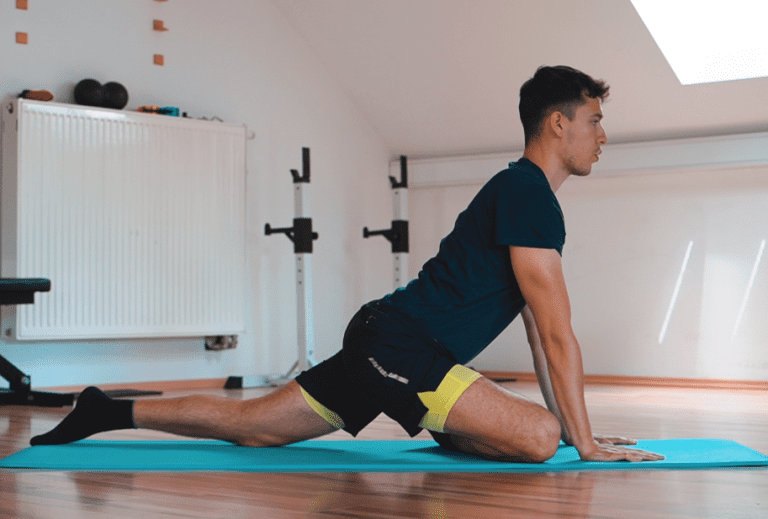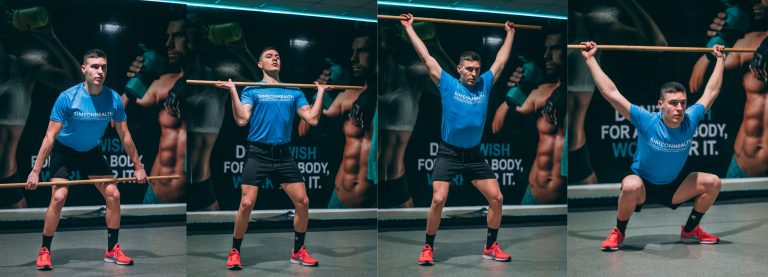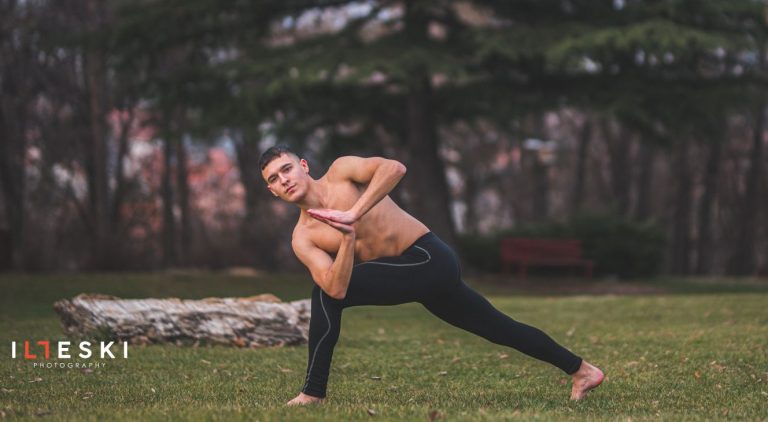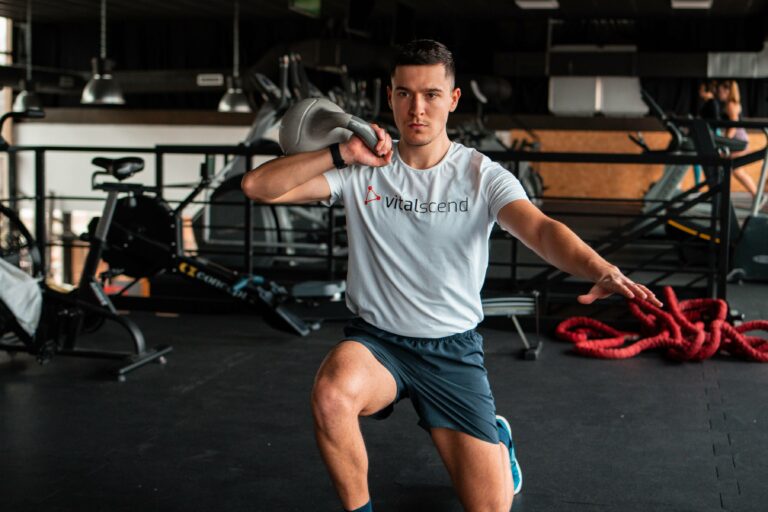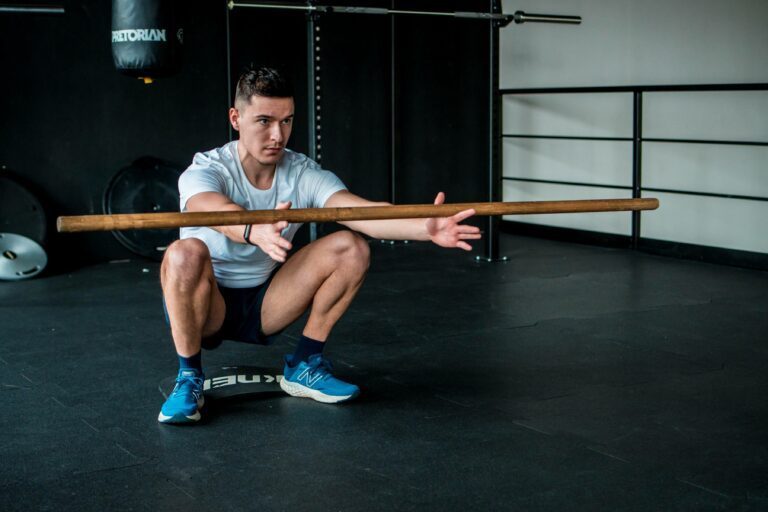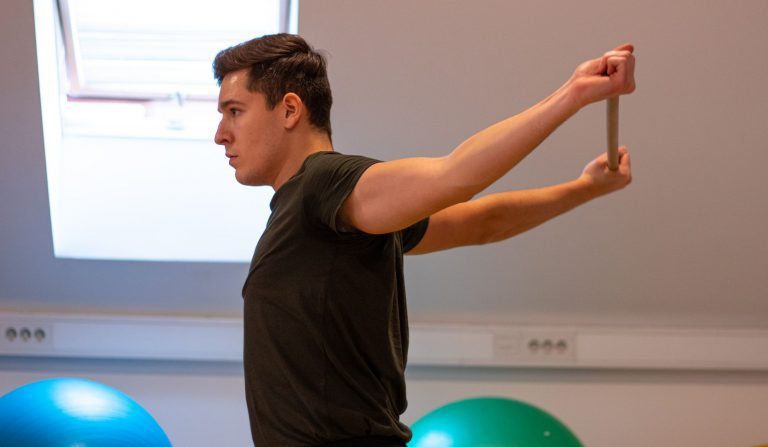Functional Yoga: Flexibility, Mobility, and Athletic Performance
Physical health is tightly related to our strength, flexibility and mobility, where functional yoga can certainly help. In fact, many people think that exercise and diet has a lot to do with health, which is true but flexibility is often a forgotten aspect of health.
Fit, slim people with great mobility are believed to live longest and be more physically efficient. Free movement is very important to a healthy person, it allows us to take on our daily activities with no pain, and lots of fluidity.
Yoga can improve our joint mobility and muscle flexibility, therefore improving the fluidity of our movement. To feel light, balanced and in control is a gift that we should all take care of. To build and animal-like body that can move, crawl, jump, squat, run, climb, flip, slide and handstand.
Yoga can condition our body to build strength and flexibility in the right muscles and mobility in the right joints. It can enhance our body’s self-awareness and enable us to move freely, which has a tremendous impact on our life quality, health, and well-being.
Flexibility vs Mobility
Flexibility has more to do with how much a muscle can stretch and mobility has to do with muscular strength, flexibility, and balance, but also joint functionality and fluidity, so it is a more complex concept.
There are different types of stretching, passive/static, ballistic/dynamic, PNF, and many more. To improve flexibility, you can do any type of stretching as long as it is consistent, it will improve your flexibility. The standard method is static stretching.
Both flexibility and mobility can be great to a certain extent. However, you should be aware of hypermobility and hyper flexibility, usually occurring in gymnasts which have to access specific positions for specific performances.
Neither one is healthy, hyper, or hypo mobility and flexibility. Not being flexible enough can cause tightness or injury, and weak mobility will reduce your ability to perform functional movement patterns.
key point
There are specific areas, muscles, and joints that need to be worked on so we can improve our flexibility and mobility the safe way. Specific joints need to be mobile, and others need to be strong and stable. Yoga and Functional Training are structured so they improve flexibility and mobility of key muscles and joints to improve posture, movement fluidity, and physical health.
- Flexibility is the ability of a muscle to stretch or lengthen during a specific movement. The more a muscle can stretch the more flexible it is. Flexible people can access more postures, and poses that can build greater strength and have a lower incidence of tightness and injuries.
- Mobility is the ability to perform functional movement patterns with a broader range of movement without pain. It depends on muscles around the joint, their strength, flexibility, and balancing characteristics, neuromuscular coordination (intramuscular and intermuscular), and joint strength, fluidity, and mobility.
Think of flexibility more as how deep in a stretching pose you can get, and of mobility as how fluidly and pain-free functional movements you can perform.
When should flexibility exercises be performed?
Stretching is most effective when the muscles are warm, so take a separate 20 min session. Or, it can be done after a warm-up, again separate from strength training. Don’t hold long stretches passively after a strength workout – you’re increasing the micro-tears in your muscles.
Will yoga help improve mobility and flexibility?
Yes, sure. Many yoga poses specifically target joint mobility and muscle flexibility. Warriors usually stretch out tight hip flexors, cobra stretches the abdominal part while the downdog opens up the shoulders and stretches the posterior portion of the legs.
Key muscles and joints
There are key muscles that need more flexibility in the average person, so we prevent pain and improve physical movement. Keep in mind these stretching-hungry muscles listed here are the muscles that are tighter in the average human, which can cause pain and movement limitation:
| Muscle Group | Specific Muscles |
| Chest muscles | pectoralis major and minor, tightness causes shoulder thoracic kyphosis |
| Hip flexor | Iliopsoas muscle, tightness causes lumbar lordosis and lower back pain |
| Hamstrings and calves | tightness causes lordosis or Achilles tendonitis, knee pain or plantar fascitis |
| Gluteus and Quadriceps muscles | tightness can cause lower back pain, knee pain and limit squat functionality. |
| Deltoid muscles | tightness in the shoulder can limit shoulder mobility and cause back and neck pain. |
Mobility, which refers to ROM in functional movement depends on the joint. There are joints that need to be stable and ones that need to be mobile, so here Is a list:
| Mobile Joints | Stable Joints |
| Ankles | Foot |
| Hips | Knee |
| Thoracic Spine | Low Back |
| Neck | Scapula |
| Shoulders | Elbow |
| Wrists |
Mobile joints need to be properly worked out so we improve the range of motion and keep it healthy with proper functional training while stability joints do not need further work in terms of mobility since they need to keep our body stable, and we usually strengthen the surrounding muscles.
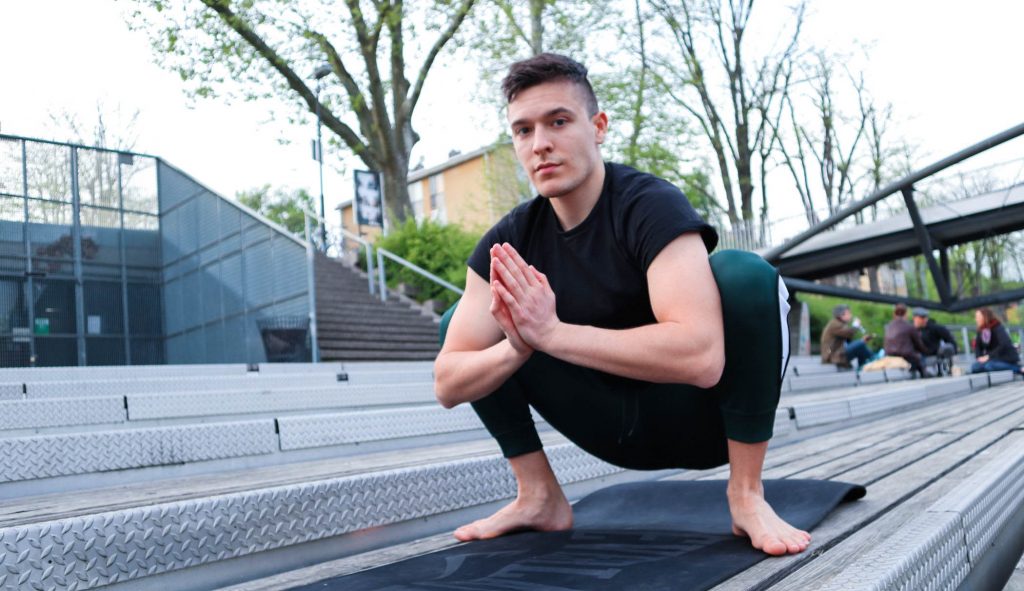
Functional Yoga on Posture
Yoga is a great workout for posture improvement since it strengthens the key muscles, improves joint mobility and muscle flexibility. To have a healthy posture means a lot in terms of your physical health, but also in terms of confidence, mood, energy, and digestion.
To ensure proper posture and pain-free, fluid movement the average human needs to work on the flexibility and strength of specific muscles and mobility of specific joints outlined in the section above.
So the average human, in order to improve his/her posture and physical health, ROM of functional movement and joint health should consider:
Strengthening
Stretching
Mobility
- Back (scapular retractors)
- Abdominals (Obliques, Rectus and Transversus)
- Lower Back (Quadratus Lumborum, Latissimus Dorsi, and Erector Spinae)
- Shoulders (Rear Deltoids)
- Gluteus Muscles.
- Chest (psoas major, minor)
- Hamstrings (biceps femoris, semitendinosus, semimembranosus)
- Calves (soleus, gastrocnemius)
- Shoulders (front and medium deltoids)
- Neck muscles and trapezius
- Hip Flexors and Extensors (gluteus and Iliopsoas).
- Hip mobility
- Shoulder mobility
- Ankle mobility
- Thoracic Spine mobility
- Neck and Wrists mobility.
key point
Keep in mind that this is the average human, not a specific program. To ensure proper posture you should consider strengthening and stretching the majority of the bigger muscle groups. Muscles shown above are the specific ones that by strengthening or stretching will improve posture, based on what is weaker and what is tighter in the population.
Evidence-Based Benefits of Yoga on Flexibility, Mobility & Athletic Performance
In the sections below there is a broader explanation and study interpretation of how yoga can affect our physical health, and improve functional movement patterns, flexibility, and mobility. Here are a couple of specific effects that yoga may provide, to enhance this aspect of physical health:
- Improves Functional Movement Screen Results
- Improved the Ability to Perform Compound Movements
- Improved Mobility and Joint Fluidity
- May Reduce Osteoarthritic Pain and Improve Mobility
- Hatha Yoga as Effective Stretching Strengthening Exercises
- Improves Self-Reported Occupational Performance and Balance in Patients with Chronic Brain Injury
- Increases Specific Muscle Flexibility and Static (Isometric) Strength
- Great Tool to Prevent Injury and Help in Rehabilitation
- Increases Full Body Awareness and Core Strength
- In Basketball Players, it may Increase Speed Endurance, Vertical Jump, Free Throw Score, Tactical Execution and Three-Point Shots
- Improves Spinal Mobility and Hamstring Flexibility
- Improves Range of Motion (ROM) in FMS (Functional Movement Screen)
- Improves Eyes-Closed Balance
- Improves Hip and Shoulder Mobility
Overall, yoga training had a positive effect on physical health and was shown to even improve the symptoms and performance of people with osteoarthritis or brain injury.
Yoga Studies: Flexibility, Mobility, and Balance
Since flexibility, strength, balance, and mobility are of such high importance to one’s physical health, here is some research that shows some evidence-based benefits or effects of yoga on these abilities.
It is widely known that the most important activities for these abilities are:
- Flexibility: Stretching, accessing postures that lengthen our muscles
- Mobility: Functional Movement Patterns (ex. Squat) in which we access deeper points of the pose
- Strengthening: Repetitive or Isometric muscle contractions, with progression over time.
Yoga on Flexibility and Elasticity
Since yoga does involve lots of stretching, here are a couple of studies that show yoga’s effect on muscle flexibility in different populations, including elderly men and women, college students, people with osteoarthritis, athletes, and more.
10-week bi-weekly yoga practice was shown to improve flexibility and balance in 14 young college students that incorporated yoga training. Measures of Range of motion in joint angles were improved for:
- RFL, Right foot lunge dorsiflexion
- DD, Downward-facing dog, knee and hip extension, and shoulder flexion
- C, Chair-pose, knee flexion (1)
Research: Yoga on Mobility and Flexibility
- In elderly women aged 50-79, yoga was shown to improve spine flexibility. They attended a Hatha yoga class once a week, for 20 weeks straight. Spinal mobility and hamstring flexibility significantly improved, contrary to popular belief that in old age we cannot condition our bodies efficiently. The study itself shows potential of yoga to improve functional fitness and muscle flexibility and joint ROM. (2)
- Yoga had a significant effect on improving flexibility in hatha yoga practitioners. This great study showed significant difference between calisthenics group, hatha yoga and non-yoga control group, which led to 5.8, 22.5 and -2.1 points in flexibility measures, respectively. They measured ROM of 13 movements and 7 joints assessed by Flexitest. It turns out that passive and slow stretching movements were more efficient that calisthenics dynamic ones, for flexibility. (3)
- In another study with 20 shooting trainee athletes, yoga training was incorporated into their training regime. Biweekly yoga training, in the mornings over a 6-week period improved flexibility measures and balance, showing that it can improve specific abilities related to athletic performance. (4)
- As human movement is reduced so is flexibility. Keeping our tissues active and nourished through movement is crucial for physical health. Yoga is one of the best training types to keep joint fluidity and muscle flexibility.
- In 9 healthy women who have trained yoga for five months twice a week, there is another proof of improved flexibility and mobility. Significant improvement in abduction-elevation, shoulder retro flexion, internal and external hip rotation, spine rotation, lateral flexion hip and dorsal flexion mobility were present. Flexibility of muscles like soleus, gastrocnemius, pectoralis major and rectus femoris, also significantly improved. (5)
- Yoga in a heated room at 50 °C was pretty effective in balance, strength and flexibility improvement. Eyes closed balance ability improved, as well as flexibility measures in chair sit-and-reach test. Even though they did slightly improve, strength and balance were not significantly affected as much as flexibility, since muscles have higher elasticity in higher temperature. (6)
Yoga on Mobility and Functional Movement
The ability to move freely and access deeper stages of poses and asanas is related to the physical aspect of health. The ability to perform correct movement patterns, flex, rotate, and extend more can improve athletic performance.
An example of functional movement exercise would be squat, shoulder press, overhead squat, hurdle step, in-line lunge and shoulder mobility. Exercise that involve full body compound movements, that include pushing, squatting, twisting, pending and pulling can be significantly improved through yoga.
Research: Yoga on Mobility and Functional Movement
- Hatha yoga was shown to be as effective as stretching and strengthening exercise training in improving flexibility, mobility and balance. Significant improvements in chair stand, arm curls, single leg balance, back scratch, gait speed, 8-feet up and go and sit-and-reach were result of hatha yoga or stretching-strengthening training. (7)
- Both yoga and pilates can help us with functional movement and health, since in this study it was proven that in 8-week yoga or pilates training, the results of functional movement screen were significantly improved, as well as 36-item health survey for the pilates group. (8)
- It was investigated whether yoga can help patients with chronic brain injury with their balance and mobility. It turns out that in 7 patients’ post-yoga (8-week) period measures of mobility, self-reported occupational performance and balance were significantly improved. (9)
- In patients with Knee osteoarthritis, yoga also had a positive effect on pain and mobility. Since training incorporated meditation and breathwork, there was therapeutical effect on pain management with arthritic patients, which is believed to be more of a mental nature (pain perception). (10)
Yoga and Athletic Performance
As important aspects of physical health, mobility and flexibility can help a lot in athletic performance, here is a couple of studies that highlight yoga’s effect on sports performance.
As a complementary or additional practice, yoga can be great for an athlete’s body. It can increase static muscle strength, and improve joint mobility and specific muscle flexibility. Even just a 30-minute biweekly yoga practice was found to positively affect athletes’ bodies, hold the potential for injury prevention, and increase core stability, flexibility and relaxation. (11)
Research: Yoga on Athletic Performance
- For basketball players, yoga was also shown effective in 13 athletes. Yoga took place 4 times weekly per 2 hours, for duration of 9 months. Improvements were seen in vertical jump, speed endurance, balance retention, free throw score, tactical execution, 3-point shots and speed. (12)
- This is logical since balance has insane impact on basketball performance. Every shot, layup, jump needs to be first in balanced position. Aside from this, the mental ability to focus has a huge impact and also flexibility and mobility improvement will allow a player to get into deeper squat or make longer stride, which is always welcomed.
- Dynamic yoga will be more suitable for athletes instead of static stretching, especially in the warm-up period. Yoga and its stretching exercise were found to be a great tool in injury prevention, rehabilitation and functional movement improvements, to access higher range of motion. It is recommended that older adults should imply static stretching exercise to stop muscle tightness. (13)
- However, basic yoga will only go as far as one’s body is out of balance. In Olympic weightlifters, which are known to have perfect mobility in order to perform their lift, yoga did not have significant impact on rate of force development, flexibility and jump height. It is safe to say that yoga can improve inner strength and core stability, however it is not safe to say it will affect strength in Olympic weight lifters. (14)
Best Yoga Poses for Flexibility
There are different methods of stretching for flexibility. From PNF methods to dynamic and static stretching. Yoga uses both, depending on which style you practice. From more passive styles like Yin, you will experience more relaxation and static stretching, from styles like Vinyasa Flow and Iyengar yoga you will do a bit more dynamic stretching. Both are great for flexibility.
| Yoga Pose | Muscles Stretched |
| Downward Dog | calves, hamstrings, and glutes |
| Reclined Hand to Big Toe Pose | hamstrings and calves |
| Cobra Pose | abdominal muscles |
| Extended Side Angle Pose | side torso, abdominal obliques, and hip flexors |
| Wide Stance Forward Bend | hip adductors |
| Reclining Bound Angle Pose | hip adductors and pelvic muscles |
| Bow Pose | front shoulders and chest muscles |
| Lord of the Dance Pose | chest, shoulder, and biceps muscles |
| Crescent Lunge | hip flexors and quadriceps |
| Eye of the Needle Pose | gluteus maximus and medius |
| Standing forward Bend | hamstrings and calves |
Research Limitations
*Studies have some limitations, important to evaluate the validity of their results. Here’s a highlight of some and NOT ALL studies (and limitation), shown in this article, for context.
- Small sample sizes n(14) and short duration studies (8,10-weeks).
- Quasi-experimental study, conducted in specific population of shooting trainee athletes.
- Large scale studies are needed to understand the underlying mechanisms.
- Studies that needs follow-up research to prove the positive impact.
- Some measures were subjective, without a control and experimental group.
- The effects of yoga on quality of life were unclear.
- Many studies involve specific population, making it hard to generalize.
Best Yoga Poses for Mobility
Performing compound movements that involve bigger muscle groups and movement around the mobile joints, such as shoulders and hips can improve joint fluidity and whole-body mobility, so here are some of the best compound yoga poses for this purpose:
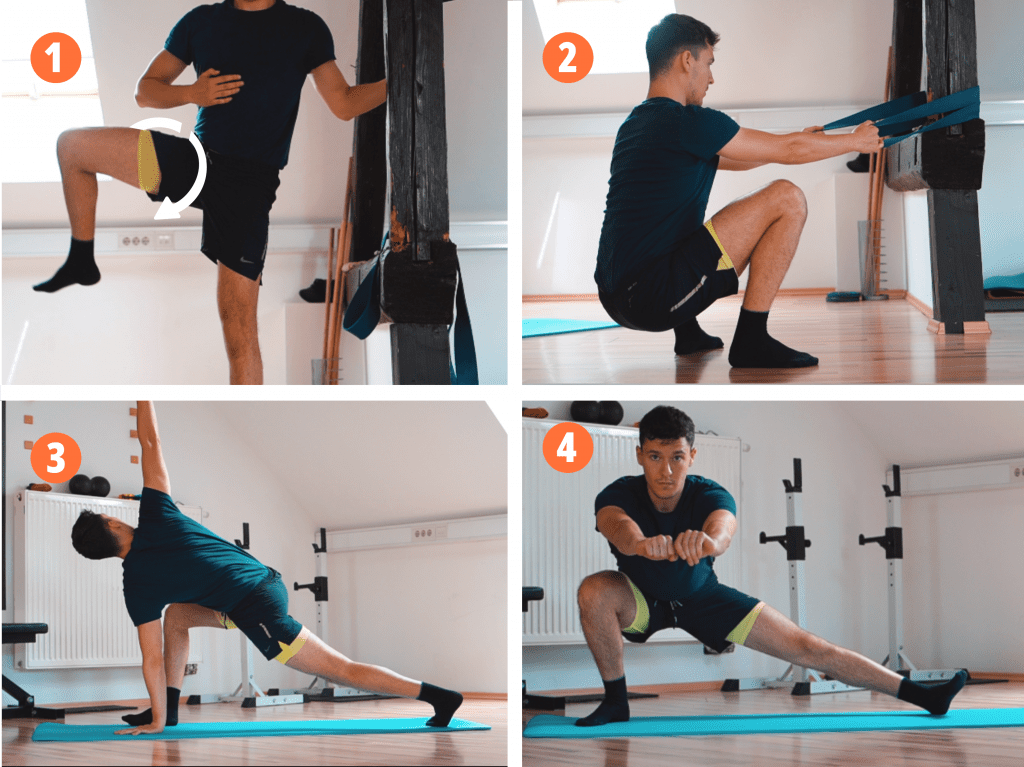
| Yoga Pose | Specific Mobility |
| Cow Pose | works thoracic and lumbar spine mobility |
| Cobra Pose | works thoracic and lumbar spine mobility |
| Upward Bow | works thoracic and lumbar spine mobility |
| Extended Triangle Pose | works hip and thoracic spine mobility |
| Malasana Squat | works your hip mobility |
| Childs Pose | works shoulder mobility |
| Bow Pose | works shoulder and spine mobility |
| Cow Face Pose | works hip and shoulder mobility |
Conclusion
Yoga incorporates many exercises that are great for mobility and flexibility. It allows freedom of movement, improves joint mobility and fluidity, reduces arthritic pain, and may improve athletic performance. Yoga is one of the best tools for improving functional movement patterns, accessing deeper poses, building flow, and nourishing your joints.


